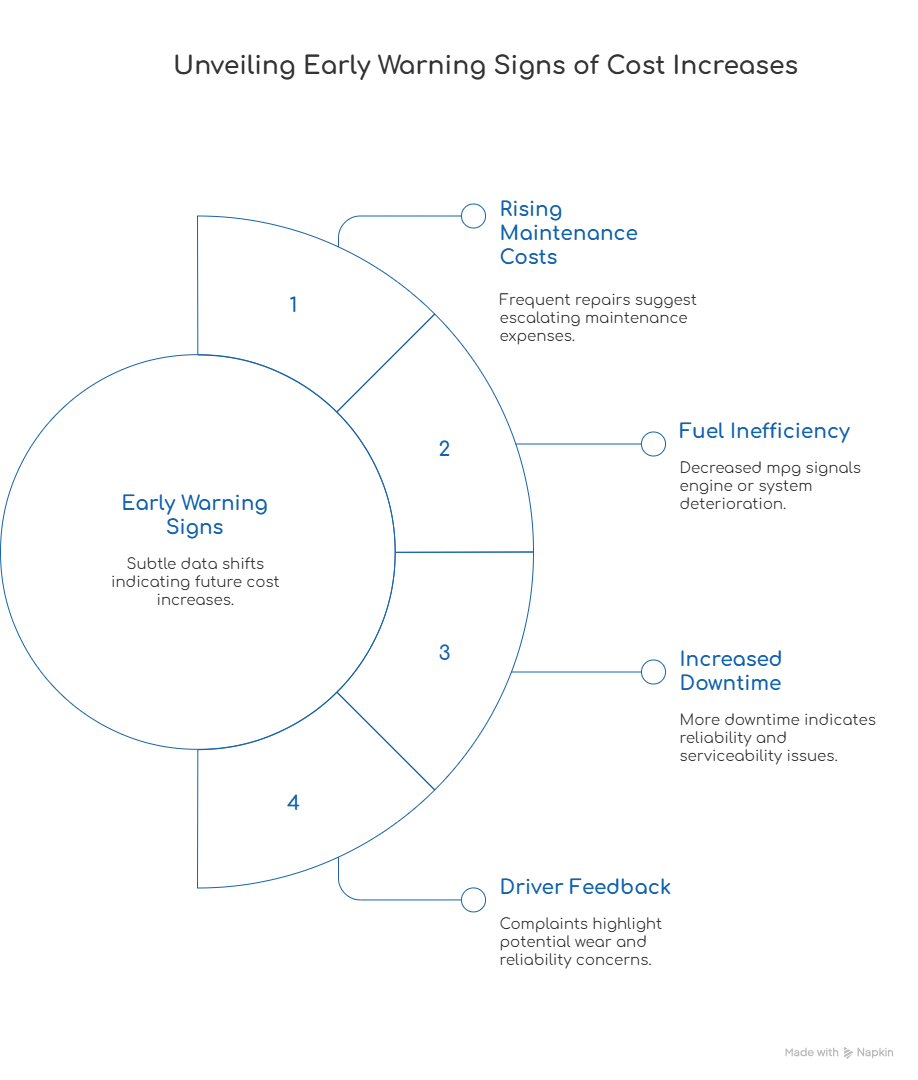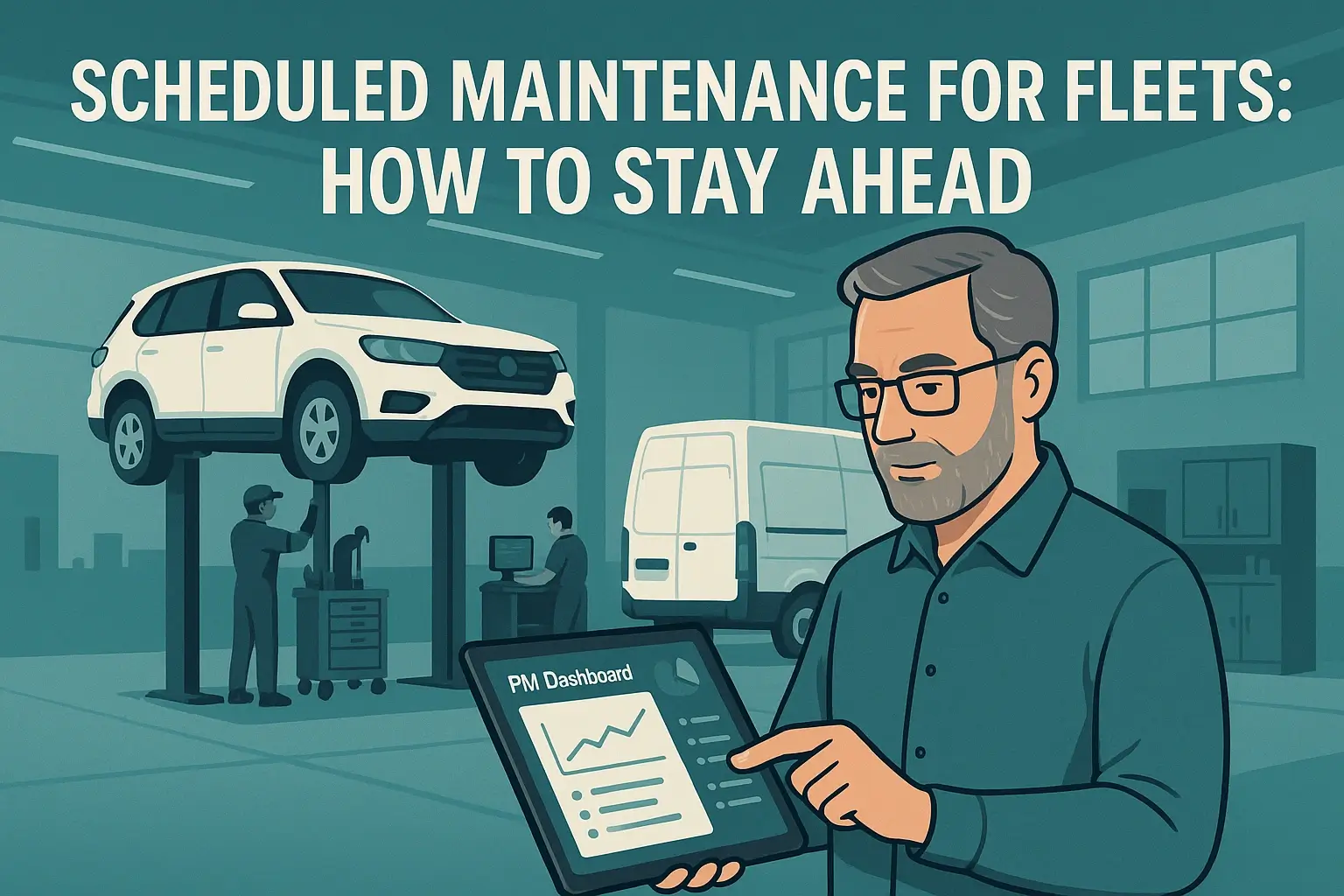Key Takeaways
- Vehicles lose value fast in early years due to depreciation.
- Rising maintenance and downtime signal replacement time.
- Track cost per mile to find the “sweet spot.”
- Delayed replacements cost more long-term.
- Data-based planning saves money and reduces disruptions.
Every fleet manager faces the same tough question: When is the right time to replace a vehicle?
Replace too early, and you lose money to steep depreciation. Wait too long, and you risk mounting repair bills, fuel inefficiency, and costly downtime.
Finding that “sweet spot” between cost efficiency and performance reliability is strategy. The key lies in tracking three pillars of fleet economics: Depreciation, Downtime, and Cost per Mile (CPM).
Depreciation: The Silent Profit Eater
Depreciation is the single biggest hidden cost in any vehicle’s lifecycle. A new fleet vehicle can lose 20–25% of its value within the first year and nearly 60% by year five. That means if you replace vehicles too soon, you’re trading in significant asset value before it’s been fully utilized.
However, if you hold vehicles for too long, resale value plummets. The depreciation curve flattens after 4–5 years, but maintenance and fuel costs often rise sharply after that period, eroding any benefit of holding on longer.
Fleet Insight: Smart fleet managers calculate residual value (the vehicle’s expected resale value) annually. If the resale value starts declining faster than operating cost savings, it’s time to plan a replacement.
Pro Tip: Use fleet telematics or accounting software to track depreciation and compare it against operating cost trends. This helps identify the point where holding costs outweigh the vehicle’s remaining value.
Downtime: The Hidden Cost of Waiting Too Long
Downtime is a productivity drain. Every hour a truck or car sits in the shop is an hour of lost revenue, missed deliveries, or rescheduled appointments.
As vehicles age, the risk of breakdowns, part failures, and extended repair times multiplies. Even with good maintenance practices, mechanical wear, electronic sensor issues, and transmission problems tend to spike after 80,000–100,000 miles.
Example: Let’s say a delivery van generates $1,000 in daily revenue. If that van is down for three days for major repairs, that’s a $3,000 revenue loss—plus the actual repair bill. Multiply that across 20 vehicles, and downtime quickly becomes one of the most expensive operational costs in your business.
Fleet Insight:
Create a Downtime Dashboard that tracks:
- Frequency of repairs per vehicle
- Average hours or days off-road
- Cost of temporary replacement vehicles
If downtime and repair costs exceed 30% of a vehicle’s monthly operating cost, it’s a clear replacement signal.
Cost per Mile (CPM): The True Measure of Fleet Health
Cost per Mile (CPM) is the ultimate metric for replacement timing because it combines all operating costs (fuel, maintenance, depreciation, insurance, and downtime) into a single value.
Formula:
CPM = (Total Operating Costs + Ownership Costs) ÷ Miles Driven
As vehicles age, CPM tends to decrease initially (after surviving early depreciation) but begins to rise again due to repairs, inefficiencies, and downtime. The optimal replacement point is where CPM stops decreasing and starts climbing.
Example:
- Year 1 CPM: $0.85/mile (high due to depreciation)
- Year 3 CPM: $0.52/mile (optimized)
- Year 5 CPM: $0.63/mile (rising due to repairs and fuel inefficiency)
When the CPM curve begins trending upward, it’s time to plan a replacement cycle.
Fleet Insight: Benchmark CPMs across your fleet and set automated alerts for vehicles that cross a 10% year-over-year increase threshold.
Maintenance and Fuel Trends: Early Warning Signs

Even before CPM spikes, small data shifts can warn you of impending costs. Look for:
- Rising maintenance costs: Frequent repairs or component replacements.
- Fuel inefficiency: Drop in mpg indicates aging engines or systems.
- Increased downtime: More days out of service year-over-year.
- Driver feedback: Complaints about reliability or comfort can signal wear issues.
Tip: Combine telematics and maintenance logs to forecast failure points. Preventive replacement can save thousands compared to reactive repairs.
Balancing Financial and Operational Factors
Fleet replacement decisions shouldn’t be purely financial. Operational and safety considerations play an equally vital role.
- Safety and Compliance: Older vehicles may lack updated safety features (lane assist, ABS, collision alerts) or fail emissions standards. Non-compliance can lead to fines or insurance hikes.
- Brand Image: In customer-facing industries (like delivery, logistics, or services) aging vehicles affect brand perception. A clean, modern fleet reflects professionalism and reliability.
- Fit for Purpose: Sometimes, replacement is less about age and more about evolving needs. Newer models often have better payload capacity, connectivity, and sustainability features that align with your company’s growth.
- Fleet Insight: Include a “qualitative” checklist in your replacement strategy (safety, compliance, image, and driver satisfaction) to complement your financial metrics.
Finding the Sweet Spot: When Numbers Meet Logic
There’s no one-size-fits-all number, but most fleet managers replace light-duty vehicles around 4–6 years or 80,000–120,000 miles, depending on usage patterns. Heavy-duty fleets often run longer but follow the same cost curve principles.
Steps to Find Your Replacement Point:
- Track depreciation trends for each vehicle.
- Calculate annual CPM and note when it starts increasing.
- Monitor downtime hours and related costs.
- Review maintenance and fuel expenses monthly.
- Compare the projected cost of keeping versus replacing the vehicle.
When your operating costs + downtime losses exceed the savings from delaying purchase, it’s time to replace.
Long-Term Strategy: Plan, Don’t React
Reactive replacements drain budgets and disrupt schedules. Instead, adopt a Fleet Replacement Plan that predicts future purchases and spreads costs evenly across fiscal years.
Tips:
- Use predictive analytics tools to plan vehicle lifecycles.
- Leverage resale market trends for maximum residual value.
- Integrate telematics to capture real-time performance data.
- Budget for replacements based on lifecycle cost projections, not emergencies.
Fleet optimization is about replacing at the right time for the right reason.
Final Thoughts
Deciding when to replace a vehicle is part science, part strategy. By closely tracking Depreciation, Downtime, and Cost per Mile, fleet managers can make data-driven choices that reduce expenses, improve uptime, and maintain operational excellence.
A disciplined replacement approach safeguards your fleet’s reliability, brand image, and driver safety.
Looking to save more from your fleet? Simply Fleet helps track depreciation, downtime, and cost per mile, so you know exactly when to replace, not guess. Schedule a free fleet health check today..



.png)








.png)


.png)
.webp)







